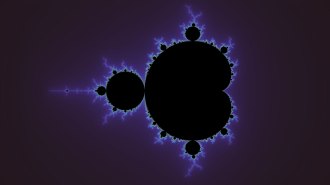By the time Christopher Columbus sailed westward in 1492, navigators were already using hefty volumes containing astronomical tables to guide them across unknown seas. These books often included detailed instructions for manipulating navigational instruments and for computing geographical positions from celestial observations.

Columbus himself probably carried copies of two invaluable books. The “perpetual almanac” prepared by Abraham Zacuto contained more than 300 pages of astronomical tables that had already contributed to such navigational feats as Vasco da Gama’s famous expedition from Portugal around the tip of Africa to India. The second volume, called the Ephemerides, had been produced by the prominent German astronomer and mathematician Johannes Müller, who went by the Latin name Regiomontanus.
The astronomical tables that Columbus consulted during his voyage proved useful for determining latitude and, to some degree, longitude. A prediction contained in the tables probably saved his life at a crucial moment during his fourth voyage to the lands he had discovered.
Nearly 2 years after sailing from Cadiz in 1502, Columbus and his restless, disgruntled crew were stranded on the north coast of Jamaica, confined to worm-eaten, leaking ships. The native inhabitants were no longer awed by the newcomers. Annoyed by their voracious appetites and angry at the depredations of crew members, who had plundered several villages, the population was hostile and would no longer supply food.
Weary and ill, Columbus had withdrawn to his ship. There, he pondered his precarious situation. Returning to the stained pages of the Ephemerides, he noted Regiomontanus’s prediction of a total eclipse of the moon on Feb. 29, 1504.
Such an eclipse occurs only when the moon passes into Earth’s shadow. A lunar eclipse looks the same anywhere on Earth, but it occurs at different times, as measured by local clocks. Regiomontanus’s book contained not only the expected dates of eclipses but also diagrams illustrating how completely the moon would be covered and precise information about each eclipse’s duration and timing down to the hour.
Columbus had observed a lunar eclipse on an earlier voyage and had noticed discrepancies between the predictions made by Zacuto and those contained in the Ephemerides. Moreover, he had no reliable way of determining the correct local time of this particular projected eclipse. The times provided by Regiomontanus for its start and end were for Nuremberg, Germany.
Despite these uncertainties, Columbus was desperate enough to take a chance. On the day before the predicted eclipse, he summoned the leaders of the native inhabitants and warned them through an interpreter that if they did not cooperate with him, the moon would disappear from the sky on the following night.
The natives for the most part were unimpressed; some even laughed. Columbus nervously awaited the outcome of his gamble. Could he rely on tables that had been compiled several decades earlier and that predicted the positions of celestial bodies only for the years between 1475 and 1506? How large were the errors?
Amazingly, the prediction proved correct. As the full moon rose in the east on the appointed night, Earth’s shadow was already biting into its face. As the moon rose higher, the shadow became larger and more distinct until it completely obscured the moon, leaving nothing but a faint red disk in the sky.
The natives were sufficiently frightened by this unexpected occurrence and by Columbus’s uncanny prediction to beg forgiveness and appeal to him to restore their moon to the sky. Columbus responded that he wished to consult with his deity. He retired to his quarters, using a half-hour sandglass to time how long the eclipse would last. Some time later, when the eclipse had reached totality, he emerged to announce that the moon, in answer to his prayers, would gradually return to its normal brightness.
The next day, the natives brought food and did all they could to please Columbus and his crew. Columbus himself used the timing of the eclipse to calculate his ship’s longitude, but his answer proved wildly erroneous.
On June 29, 1504, a Spanish ship rescued Columbus’s stranded party, a year after it had beached on the Jamaican coast. A few months later, Columbus set sail for Spain, bringing to an end his voyages to the New World.
The success of Columbus’s strategem was a tribute to the accuracy of the calculations and predictions made by Regiomontanus, based on Ptolemy’s Earth-centered model of the solar system.
Such a dramatic episode didn’t escape the attention of novelists, who later used eclipse occurrences in a similar way to further their own plots. You’ll find the device in H. Rider Haggard’s King Solomon’s Mines, Mark Twain’s A Connecticut Yankee in King Arthur’s Court, and even in Hergé’s Tintin adventure Prisoners of the Sun.
In some cases, the event is a solar rather than a lunar eclipse. And the details of the eclipse aren’t always astronomically correct, especially in the movie versions of the books.
But it worked for Columbus.






